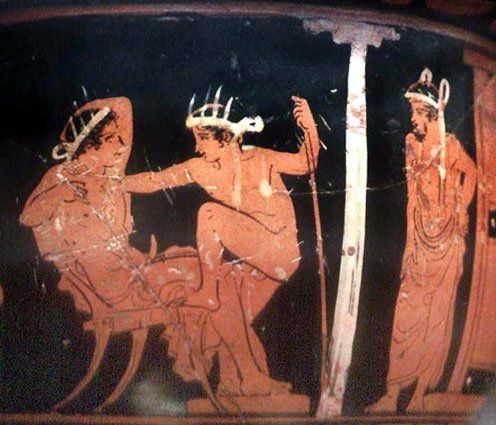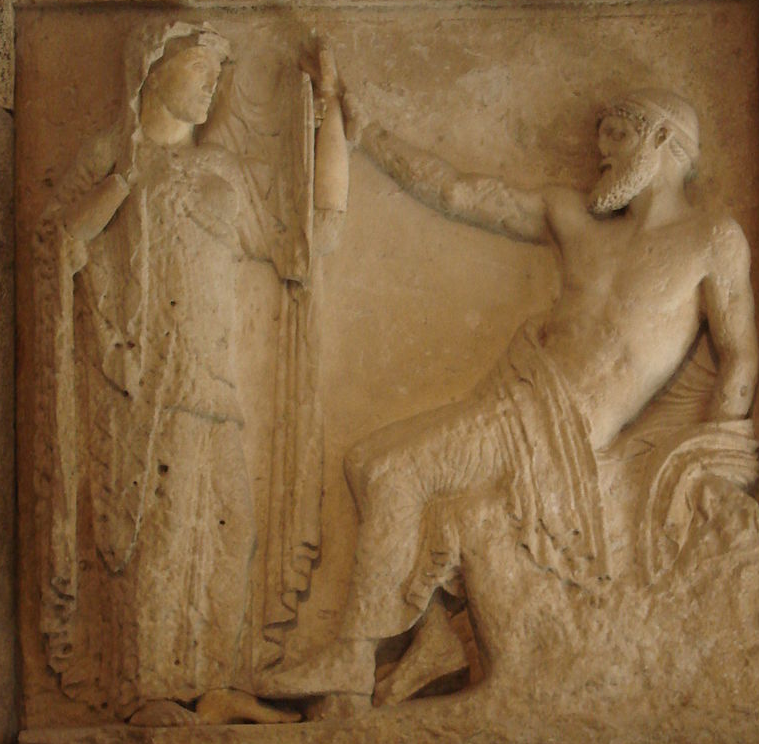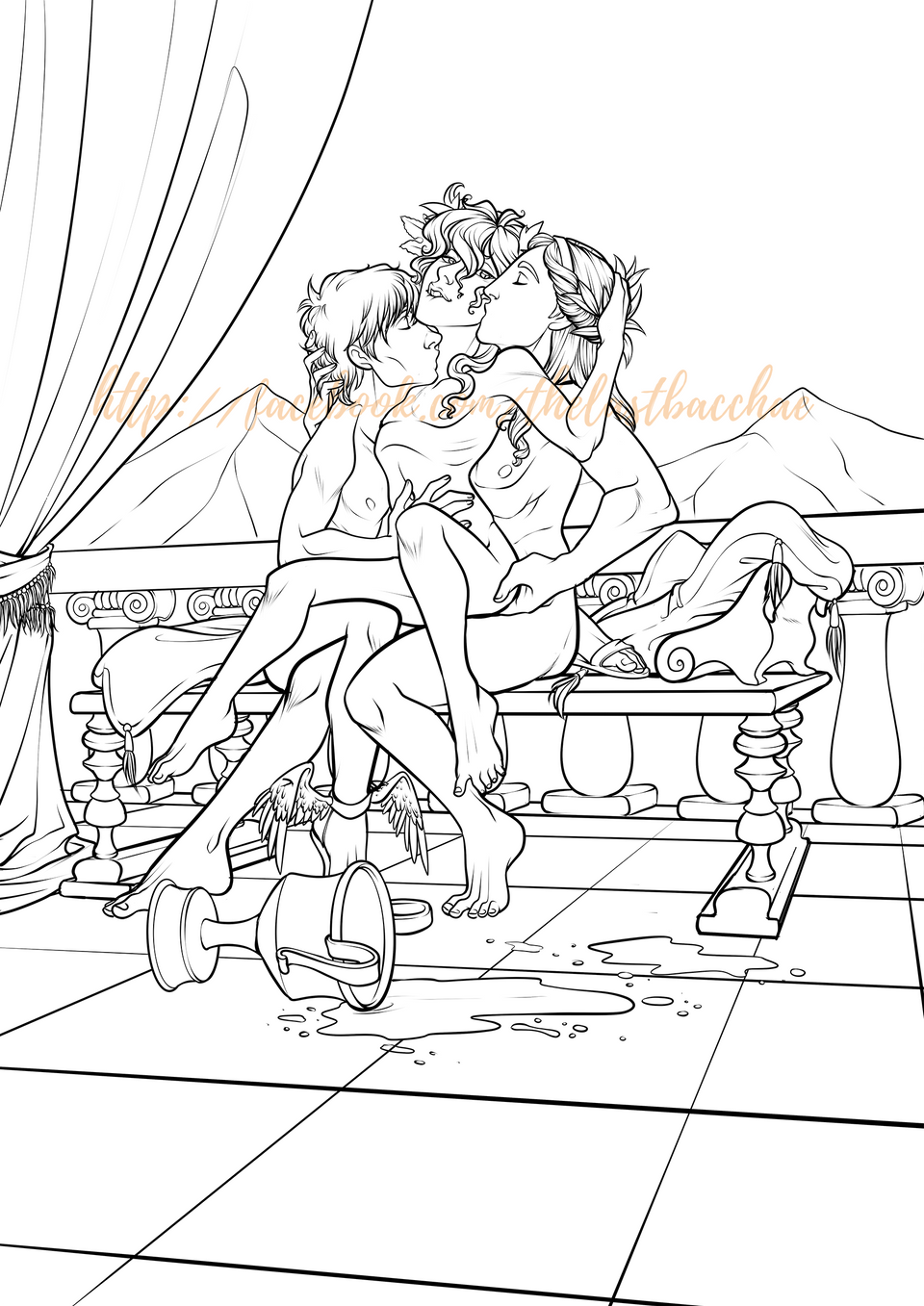Hermaphroditos – Neither Man Nor Woman, But Both
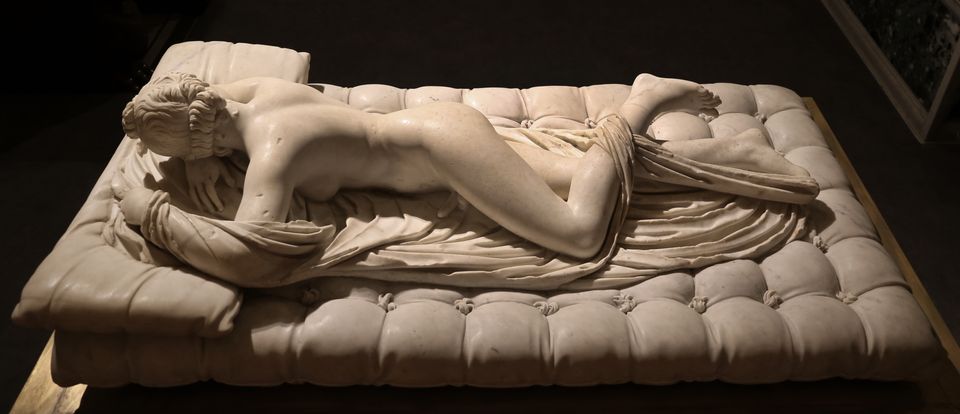
Hermaphroditos, the Greek god from which the term hermaphrodite derives, is a god with both male and female features. Usually, Hermaphroditos is depicted with the body of a beautiful woman but with male genitalia. Though the name has a male suffix (-os), I will refer to Hermaphroditos as they/them in this text because they "could not be called either a man or a woman, but were both".
In Greek mythology, Hermaphroditos was born to Aphrodite and Hermes, the goddess representing female sexuality and the god representing male sexuality. The name is compounded of Hermes and Aphrodite, and is synonymous with the Greek words androgunês (androgynous), gunandros (gynandrous), and hêmiandros (half-man or half-male).
The Mythology of Hermaphroditos
The only Greek work about Hermaphroditos that has come down to us is the 1st century BCE Bibliothḗkē historikḗ by Diódoros ho Sikeliótes (Diódoros of Sicily), so it's a relatively late source.
The Bibliotheke relates that Hermaphroditos is the child of Hermes and Aphrodite and that their name is a combination of their parents' names. It further tells:
"Some say that this Hermaphroditos is a god and appears at certain times among men, and that he is born with a physical body which is a combination of that of a man and that of a woman, in that he has a body which is beautiful and delicate like that of a woman, but has the masculine quality and vigour of a man. But there are some who declare that such creatures of two sexes are monstrosities, and coming rarely into the world as they do they have the quality of presaging the future, sometimes for evil and sometimes for good."
The only complete myth is told in Ovid's Metamorphoses (IV.274). In the account of Ovid, Hermaphroditos was born and raised as a boy. Aphrodite and Hermes gave him into the care of the nymphs of Mount Ida (in modern northwestern Turkey) to nurse and raise him. At the age of fifteen, he left his childhood home seeking adventure and travelled to Karia (an ancient region of Anatolia in modern Turkey). In the neighbourhood of Halikarnassos, he went to the spring Salmakis for a bath. The nymph of the spring lusted after the beautiful boy but he refused her. So she pretended to have left and once he was bathing, she caught him, forcing kisses and caresses and prayed to the gods that they might unite them for ever. The gods – the tale doesn't mention which one – granted the request, and the bodies of Hermaphroditos and the nymph merged together, blended in one form and face, so they could not be called either a man or a woman, but were both. Hermaphroditos, on becoming aware of the change, asked his parents to curse the spring so that everyone who bathed in it should be made half woman as well. Hermes and Aphrodite both heard their child and granted his wish.
You can read the original here in the translation by Brookes More. Be warned, the nymph is pretty rapey.
The 2nd century BCE Salmakis inscription paints a very different picture, though. The inscription was found on the remains of an ancient wall at Halikarnassos. The inscription asks two questions of Aphrodite:
"What is so good about Halikarnassos?" and "Why is this place so special?"
In answer, Aphrodite tells the story of her child:
"And Halikarnassos settles the delightful hill beside the stream of Salmakis, sung of as dear to the immortals, and her domain includes the desirable home of the nymph, she who once received our child in her kindly arms and reared Hermaphroditos the all-excellent, he who invented marriage and was the first to bind together wedded couples by his law, and she herself beneath the holy waters in the cave that she pours forth makes gentle the savage minds of men."
So instead of bereaving the young god of his manhood, the waters of Salmakis have a civilising effect in this story. It's not entirely clear if Hermaphroditos is supposed to be two-sexed in Aphrodite's tale or male, but most scholars agree it is the two-sexed Hermaphroditos.
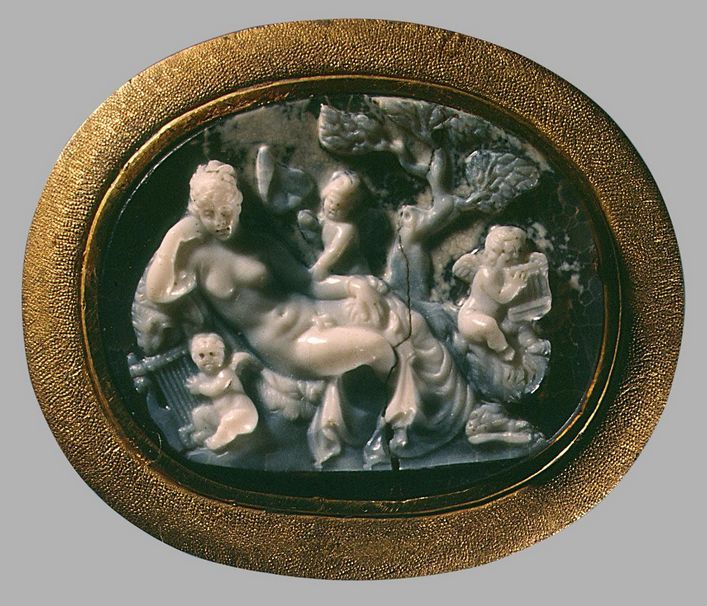
This, to my knowledge, is the only source that explicitly associates Hermaphroditos with marriage.
Hermaphroditos went on to join the Erotes ("Loves"), a band of winged love gods in the retinue of Aphrodite, as the deity of hermaphrodites and of effeminates.
Origins
The very first mention of Hermaphroditos in literature is a 3rd century BCE work by Theophrastos titled Ethikoì Charakteres.
"Also on the fourth and seventh days of each month he will order his servants to mull wine, and go out and buy myrtle-wreaths, frankincense, and smilax; and, on coming in, will spend the day in crowning the Hermaphrodites."
But Hermaphroditos appears in artwork that is older than the Charakteres.
A Male Aphrodite?
There is a theory that Hermaphroditos might have been originally a male Aphrodite (Aphroditos), represented as a herm. Herms are simple statues, usually a square pillar with just a head on top and a phallus at the appropriate length. They were most often showing the god Hermes, but herms existed of other gods as well. The "Hermaphrodites" in Charakteres most likely refer to such a herm.
Hermaphroditos as a divine being combining the two sexes, was later depicted with the head, breasts, and body of a woman, but with the sexual parts of a man.
Cult
There is no mention of a cult of Hermaphroditos before the 4th century BCE, but there are so many ancient hermaphrodite sculptures in a variety of forms, many of which are votive offerings, that it's safe to say Hermaphroditos had a following and a function as a deity.
Hermaphroditos' association with marriage, as made explicit in the Salmakis Inscription, seems to have been that, by embodying both masculine and feminine qualities, the deity symbolises the coming together of men and women in sacred union. Another factor linking Hermaphroditos to weddings was their role as one of the Erotes.
Like their half-brother Priapos, a son of Aphrodite and Dionysos, Hermaphroditos was also shown with an erect penis in art. Many such depictions are found in relief form on houses, or in the round at gymnasiums and baths, and even in graves, where they are thought to serve as apotropaic guardians.
Agdistis, a deity of Greek, Roman, and Anatolian mythology possessing both male and female sexual organs, was seen as especially powerful, because they were both sexes. Both sexes implied extra power, whereas to be unsexed implies a lack of power and identity. This could be the reason why the ancient Greek sculpture called The Pergamon Hermaphrodite has a voluptuous feminine form to go with their male genitals, so as to appear extra sexed rather than unsexed: a powerful deity.
This article was written in celebration of Pride Month🏳️🌈 and published early on my Patreon – subscribe here for more erotic fiction and non-fiction articles on ancient Greece.
Find all my free erotic mythology shorts here.
Further Reading
- Hermaphroditos on theoi.com
- The story of Hermaphroditos as told in Ovid's Metamorphoses, translated by Brookes More
- "Ethikoì Charakteres" by Theophrastos, translated by R. C. Jebb
- "The Marriage Maker. The Pergamon Hermaphrodite as the God Hermaphroditos, Divine Ideal and Erotic Object" by Victor Szepessy
